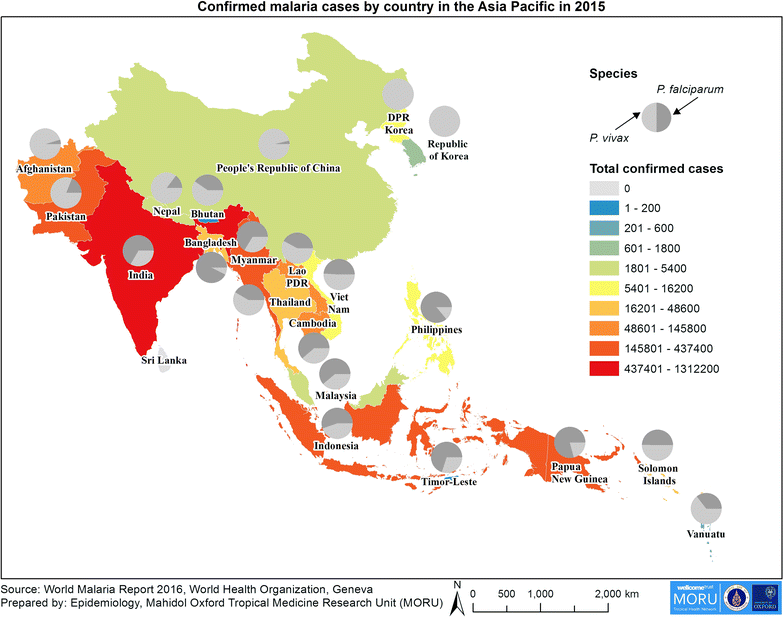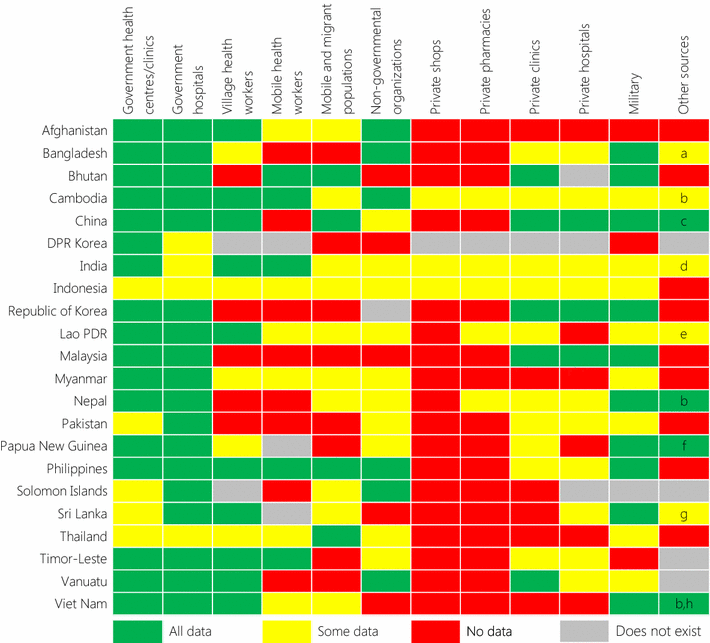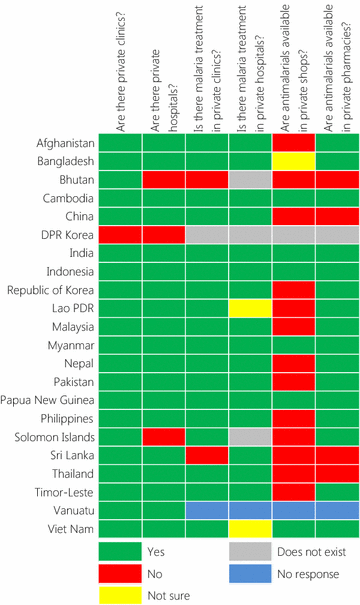An assessment of national surveillance systems for malaria elimination in the Asia Pacific
- PMID: 28327180
- PMCID: PMC5361802
- DOI: 10.1186/s12936-017-1774-3
An assessment of national surveillance systems for malaria elimination in the Asia Pacific
Abstract
Background: Heads of Government from Asia and the Pacific have committed to a malaria-free region by 2030. In 2015, the total number of confirmed cases reported to the World Health Organization by 22 Asia Pacific countries was 2,461,025. However, this was likely a gross underestimate due in part to incidence data not being available from the wide variety of known sources. There is a recognized need for an accurate picture of malaria over time and space to support the goal of elimination. A survey was conducted to gain a deeper understanding of the collection of malaria incidence data for surveillance by National Malaria Control Programmes in 22 countries identified by the Asia Pacific Leaders Malaria Alliance.
Methods: In 2015-2016, a short questionnaire on malaria surveillance was distributed to 22 country National Malaria Control Programmes (NMCP) in the Asia Pacific. It collected country-specific information about the extent of inclusion of the range of possible sources of malaria incidence data and the role of the private sector in malaria treatment. The findings were used to produce recommendations for the regional heads of government on improving malaria surveillance to inform regional efforts towards malaria elimination.
Results: A survey response was received from all 22 target countries. Most of the malaria incidence data collected by NMCPs originated from government health facilities, while many did not collect comprehensive data from mobile and migrant populations, the private sector or the military. All data from village health workers were included by 10/20 countries and some by 5/20. Other sources of data included by some countries were plantations, police and other security forces, sentinel surveillance sites, research or academic institutions, private laboratories and other government ministries. Malaria was treated in private health facilities in 19/21 countries, while anti-malarials were available in private pharmacies in 16/21 and private shops in 6/21. Most countries use primarily paper-based reporting.
Conclusions: Most collected malaria incidence data in the Asia Pacific is from government health facilities while data from a wide variety of other known sources are often not included in national surveillance databases. In particular, there needs to be a concerted regional effort to support inclusion of data on mobile and migrant populations and the private sector. There should also be an emphasis on electronic reporting and data harmonization across organizations. This will provide a more accurate and up to date picture of the true burden and distribution of malaria and will be of great assistance in helping realize the goal of malaria elimination in the Asia Pacific by 2030.
Keywords: Asia Pacific; Epidemiology; Malaria elimination; National Malaria Control Programme; Surveillance.
Figures



References
-
- WHO . World malaria report 2014. Geneva: World Health Organization; 2014.
-
- WHO . Strategy for malaria elimination in the Greater Mekong Subregion: 2015–2030. Geneva: World Health Organization; 2015.
Publication types
MeSH terms
Grants and funding
LinkOut - more resources
Full Text Sources
Other Literature Sources
Medical

